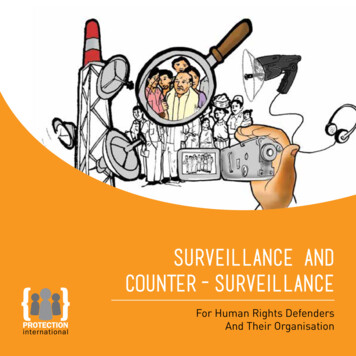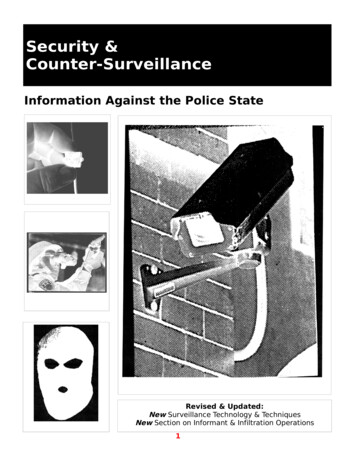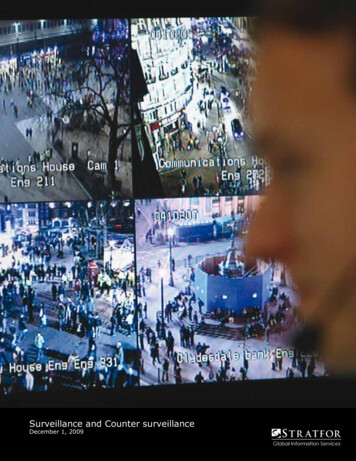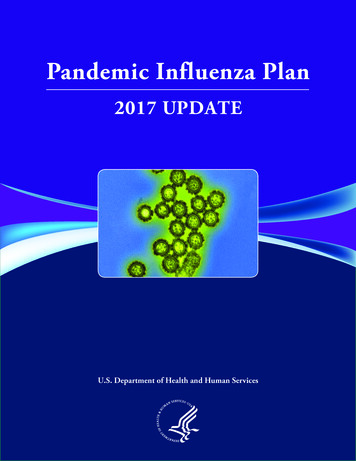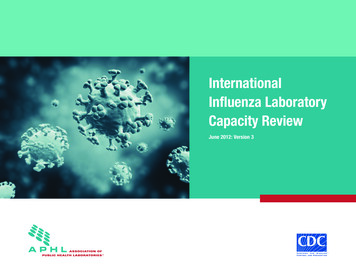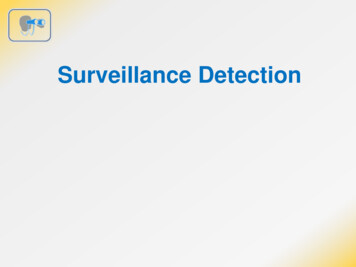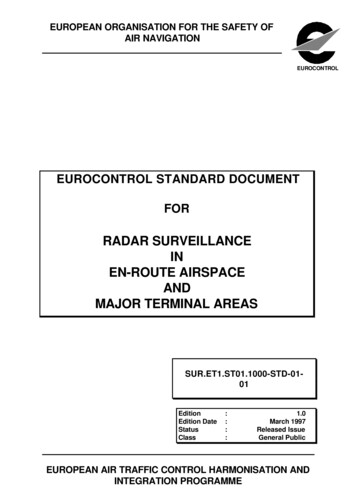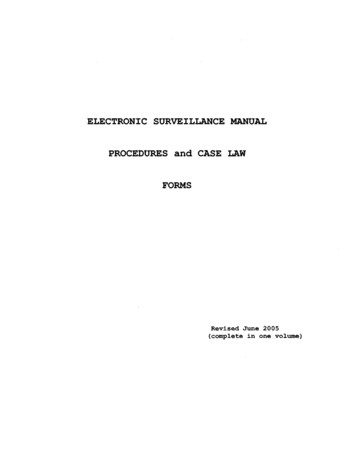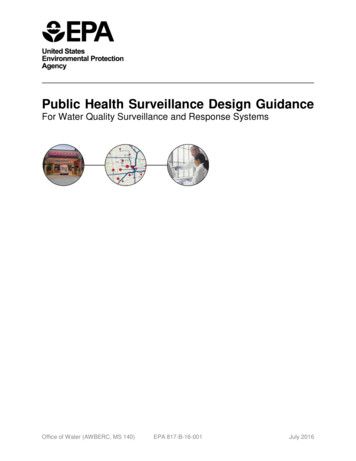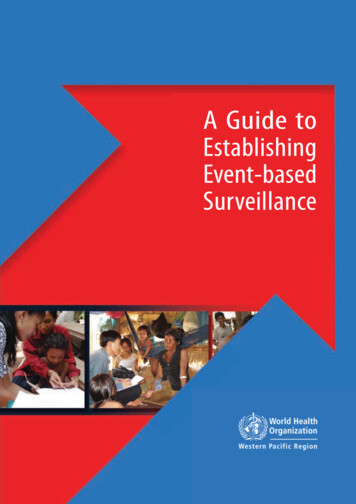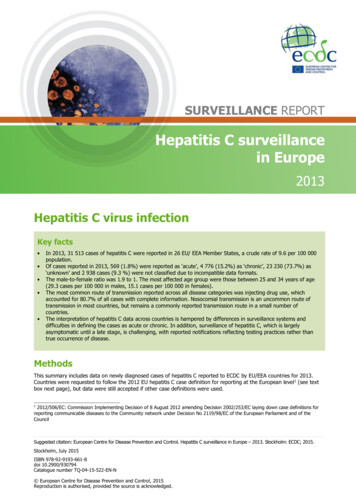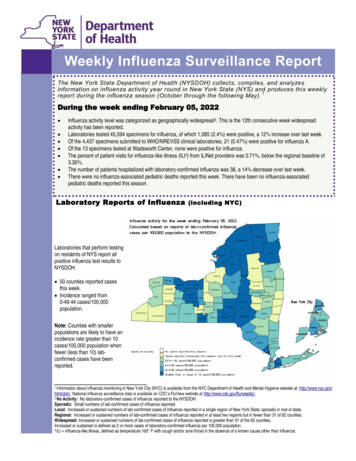
Transcription
Weekly Influenza Surveillance ReportThe New York State Department of Health (NYSDOH) collects, compiles, and analyzesinformation on influenza activity year round in New York State (NYS) and produces this weeklyreport during the influenza season (October through the following May). 1During the week ending February 05, 2022 Influenza activity level was categorized as geographically widespread2. This is the 12th consecutive week widespreadactivity has been reported.Laboratories tested 45,594 specimens for influenza, of which 1,085 (2.4%) were positive, a 12% increase over last week.Of the 4,437 specimens submitted to WHO/NREVSS clinical laboratories, 21 (0.47%) were positive for influenza A.Of the 13 specimens tested at Wadsworth Center, none were positive for influenza.The percent of patient visits for influenza-like illness (ILI3) from ILINet providers was 0.71%, below the regional baseline of3.30%.The number of patients hospitalized with laboratory-confirmed influenza was 38, a 14% decrease over last week.There were no influenza-associated pediatric deaths reported this week. There have been no influenza-associatedpediatric deaths reported this season.Laboratory Reports of Influenza (including NYC)Laboratories that perform testingon residents of NYS report allpositive influenza test results toNYSDOH. 50 counties reported casesthis week. Incidence ranged from0-49.44 cases/100,000population.Note: Counties with smallerpopulations are likely to have anincidence rate greater than 10cases/100,000 population whenfewer (less than 10) labconfirmed cases have beenreported.1 Informationabout influenza monitoring in New York City (NYC) is available from the NYC Department of Health and Mental Hygiene website at: http://www.nyc.gov/html/doh/. National influenza surveillance data is available on CDC’s FluView website at http://www.cdc.gov/flu/weekly/.2 No Activity: No laboratory-confirmed cases of influenza reported to the NYSDOH.Sporadic: Small numbers of lab-confirmed cases of influenza reported.Local: Increased or sustained numbers of lab-confirmed cases of influenza reported in a single region of New York State; sporadic in rest of state.Regional: Increased or sustained numbers of lab-confirmed cases of influenza reported in at least two regions but in fewer than 31 of 62 counties.Widespread: Increased or sustained numbers of lab-confirmed cases of influenza reported is greater than 31 of the 62 counties.Increased or sustained is defined as 2 or more cases of laboratory-confirmed influenza per 100,000 population.3 ILI influenza-like illness, defined as temperature 100 F with cough and/or sore throat in the absence of a known cause other than influenza.
Weekly Influenza Surveillance ReportPage 2Laboratory Reports of Influenza (including NYC)Test results may identify influenza Type A, influenza Type B, or influenza without specifying Type A or B. Some tests only give a positive ornegative result and cannot identify influenza type (not specified).County-level data is displayed on the NYS Weekly Influenza Surveillance (Interactive Views) at e-flu-tracker. To download the data, please go to Health Data NY at toryConfirmed-Cases-By-County-Beg/jr8b-6gh6.
Page 3World Health Organization (WHO) and National Respiratory & EntericVirus Surveillance System (NREVSS) Collaborating LaboratoriesClinical laboratories that are WHO and/or NREVSS collaborating laboratories for virologic surveillance report weekly the number ofrespiratory specimens tested and the number positive for influenza types A and B to CDC. Since denominator data is provided, theweekly percentage of specimens testing positive for influenza is calculated.Public health laboratories that are WHO and/or NREVSS collaborating laboratories also report the influenza A subtype (H1 or H3)and influenza B lineage (Victoria or Yamagata).Influenza Virus Types and Subtypes Identified at Wadsworth Center(excluding NYC)Wadsworth Center, the NYSDOH public health laboratory, tests specimens from sources including, outpatient healthcare providers(ILINet) and hospitals (FluSurv-NET). There are 2 common subtypes of influenza A viruses – H1 and H3. Wadsworth also identifies thelineage of influenza B specimens Yamagata or Victoria. Rarely, an influenza virus is unable to have it’s subtype or lineage identified bythe laboratory. Wadsworth sends a subset of positive influenza specimens to the CDC for further virus testing and characterization.
Weekly Influenza Surveillance ReportPage 4Influenza Antiviral Resistance TestingThe Wadsworth Center Virology Laboratory performs surveillance testing for antiviral drug resistance. 4Available data will be displayed here later in the season.Outpatient Influenza-like Illness Surveillance Network (ILINet)(excluding NYC)The NYSDOH works with ILINet healthcareproviders who report the total number of patientsseen and the total number of those with complaints ofinfluenza-like illness (ILI) every week in an outpatientsetting.The CDC uses trends from past years to determine aregional baseline rate of doctors' office visits for ILI.For NYS, the regional baseline is currently 3.30%.Numbers above this regional baseline suggest highlevels of illness consistent with influenza in the state.Note that surrounding holiday weeks, it is notuncommon to notice a fluctuation in the ILI rate. Thisis a result of the different pattern of patient visits fornon-urgent needs.Emergency Department Visits for ILI-Syndromic Surveillance(excluding NYC)Hospitals around NYS report the number ofpatients seen in their emergency departments withcomplaints of ILI. This is called syndromicsurveillance.An increase in visits to hospital emergencydepartments for ILI can be one sign that influenzahas arrived in that part of NYS.Syndromic surveillance does not reveal the actualcause of illness, but is thought to correlate withemergency department visits for influenza.4Additional information regarding national antiviral resistance testing, as well as recommendations for antiviraltreatment and chemoprophylaxis of influenza virus infection, can be found at http://www.cdc.gov/flu/weekly/.
Page 5Patients Hospitalized withLaboratory-Confirmed Influenza(including NYC) Hospitals in NYS and NYC report the number of hospitalizedpatients with laboratory-confirmed influenza to NYSDOH. The following graphs display incidence admissions “newlyadmitted”. 173 (90%) of 192 hospitals reported this week.Influenza Hospitalization Surveillance Network (FluSurv -NET)As part of the CDC’s FluSurv-NET, the NYS Emerging Infections Program (EIP) conducts enhanced surveillance for hospitalized casesof laboratory-confirmed influenza among residents of 15 counties.5 Underlying health conditions are assessed through medical chartreviews for cases identified during the season.6Available data will be displayed here later in the season.Counties include, in the Capital District: Albany, Columbia, Greene, Montgomery, Rensselaer, Saratoga, Schenectady, and Schoharie;in the Western Region: Genesee, Livingston, Monroe, Ontario, Orleans, Wayne, and Yates6Data are based on medical record reviews for hospitalized cases currently under investigation and should be considered preliminary.5
Weekly Influenza Surveillance ReportPage 6Healthcare-associated Influenza Activity (including NYC)Hospitals and nursing homes in NYS report outbreaks of influenza to the State. An outbreak in these settings is defined as one or morehealthcare facility-associated case(s) of confirmed influenza in a patient or resident or two or more cases of influenza-like illness amonghealthcare workers and patients/residents of a facility on the same unit within 7 days. Outbreaks are considered confirmed only withpositive laboratory testing.7For information about the flu mask regulation and the current status of the Commissioner's declaration, please visit www.health.ny.gov/FluMaskRegPediatric influenza-associated deaths reported (including NYC)Local health departments report pediatric influenza-associated deaths to NYSDOH.Flu-associated deaths in children younger than 18 years old are nationally notifiable. Influenza-associated deaths in persons 18 yearsand older are not notifiable. All pediatric flu-associated deaths included in this report are laboratory-confirmed.7For more information on reporting of healthcare-associated influenza, e/control/respiratory disease checklist.htm
6Data are based on medical record reviews for hospitalized cases currently under investigation and should be considered preliminary. Pediatric influenza - associated deaths reported (including NYC) Wee
